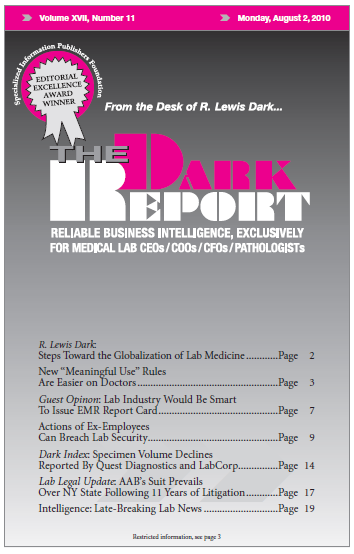SCORE A BIG WIN FOR THE GOOD GUYS! An appeals court in New York state has upheld a lower court ruling that the New York State Department of Health (NYSDOH) intentionally overcharged clinical laboratories for the costs of regulating clinical laboratories and blood banks, possibly going back decades. On July 22, the Appellate Division, Third …
AAB’s Suit Prevails over NY State Following 11 Years of Litigation Read More »
To access this post, you must purchase The Dark Report.


